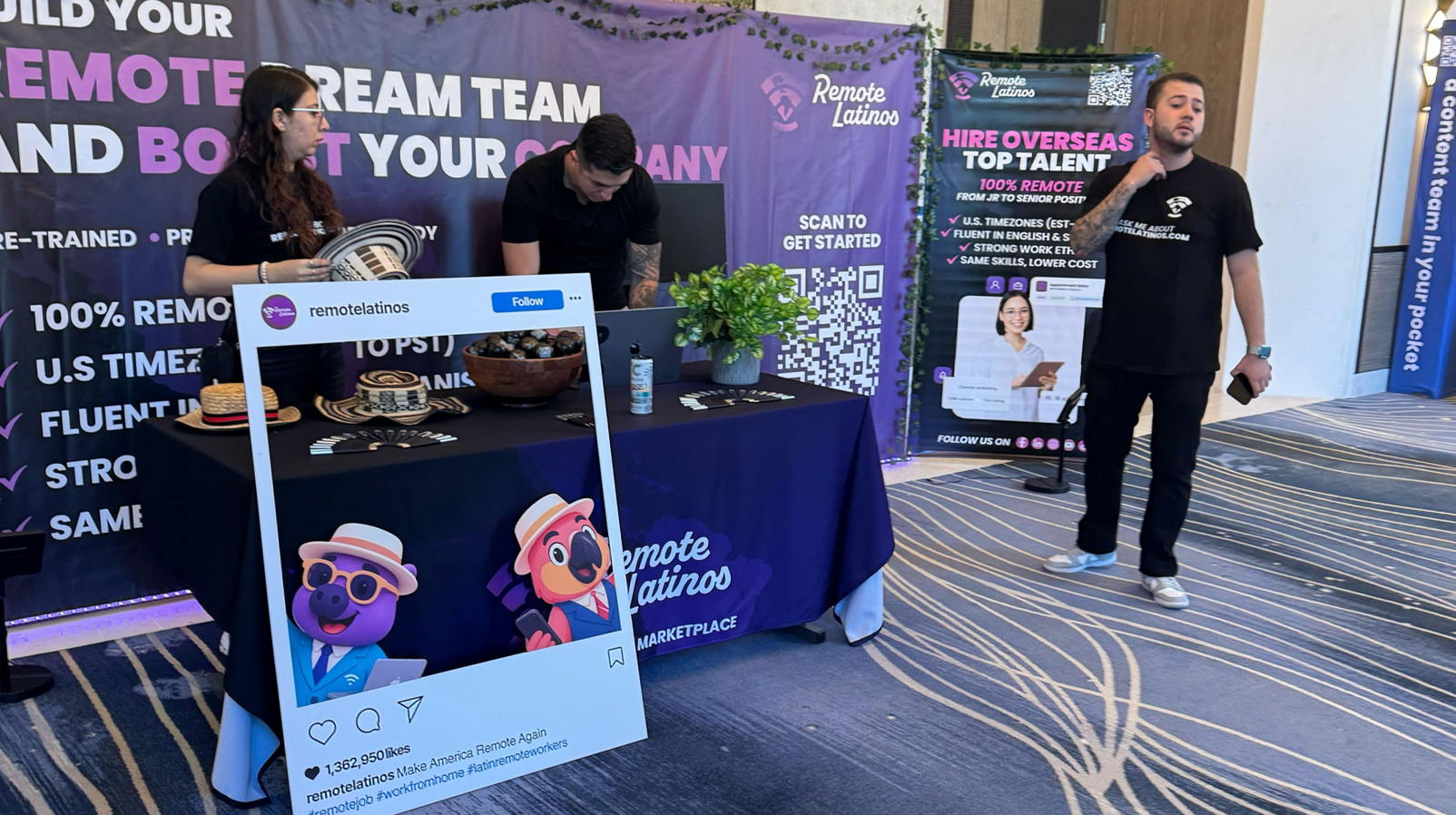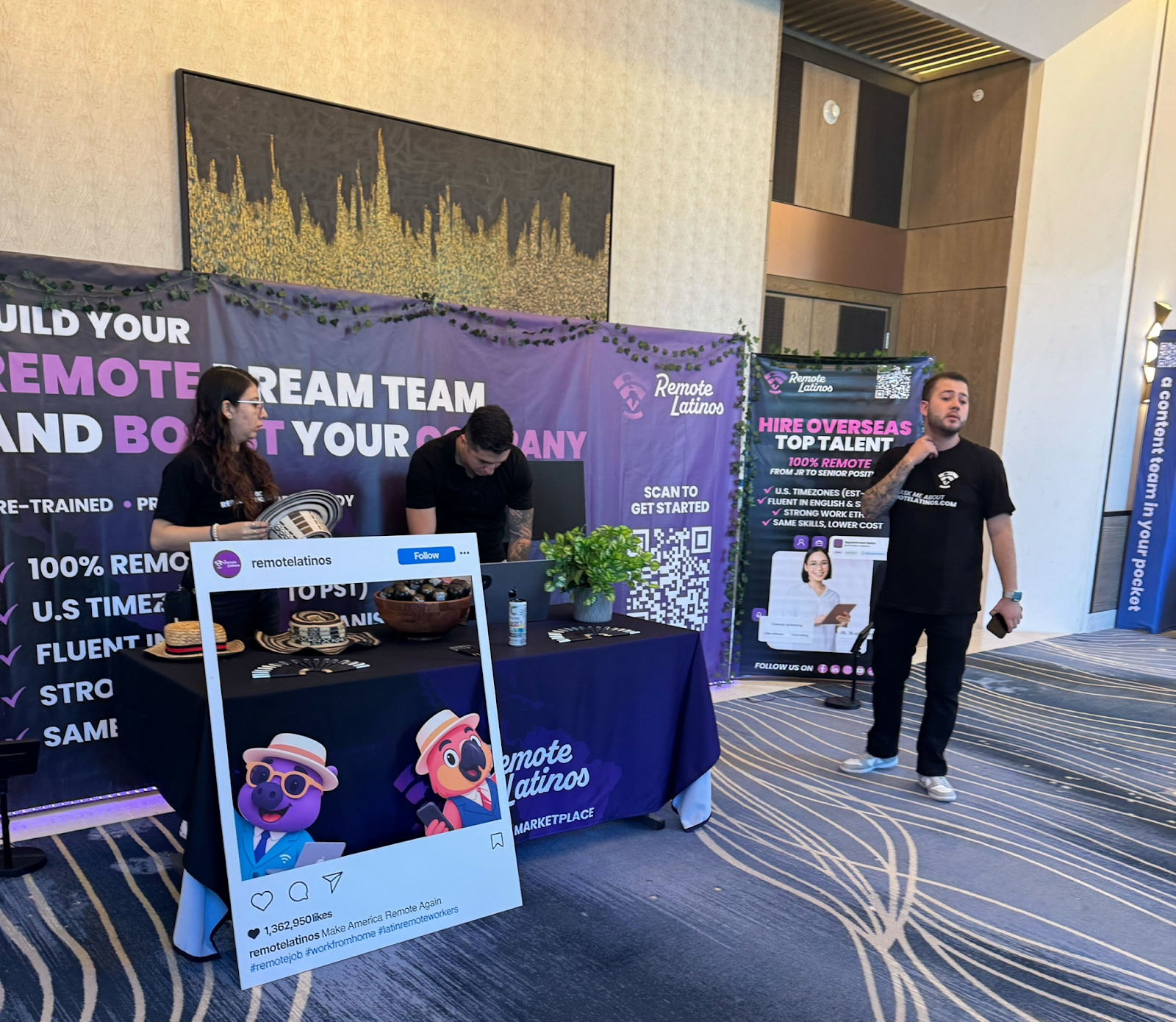Key Considerations When Hiring Remote Talent from Latin America

Before hiring in Latin America, it’s important to understand the broader context. Economic shifts, educational growth, and professional development trends shape the availability and quality of talent. By analyzing this landscape, you’ll know where to focus your efforts and what skills are most in demand.

Table of Contents:
- Considerations and Understanding the Remote Talent Landscape in Latin America.
- Legal and Compliance Considerations for Hiring Remote Talent in Latin America.
- Cultural Alignment and Communication Considerations.
- Technical Infrastructure and Remote Readiness Considerations.
- Cost and Compensation Structures Considerations.
- Sourcing and Vetting Remote Latin America Talent.
- Retention and Long-Term Engagement Considerations.
- Conclusion.
- FAQ.
Considerations and Understanding the Remote Talent Landscape in Latin America
Before making hiring decisions, it’s essential to understand the unique dynamics shaping Latin America’s workforce. The region is experiencing rapid digital growth, a surge in highly educated professionals, and increased adoption of remote work. By examining these economic and professional trends, along with the most in-demand skill sets, companies can better align their hiring strategies with the realities of the Latin American talent market.
Economic Considerations and professional trends
The rise of remote work, accelerated by the pandemic, has opened international job markets to Latin American professionals like never before. The region boasts a growing middle class, increasing internet penetration, and government initiatives to support digital industries. According to Winning the Talent Wars by Bruce Tulgan, global employers are now competing for the same Latin American talent once limited to local markets. For U.S. companies, this creates an opportunity to tap into skilled professionals without the overhead of in-country operations.
Most in-demand skill sets
High-demand fields in Latin America’s remote workforce include software engineering, digital marketing, design, data analytics, project management, and customer success. Bilingualism (English-Spanish or English-Portuguese) is common among top-tier candidates, especially in tech and service industries. As highlighted in Latino Talent, many professionals also bring cross-cultural agility, making them effective in global team environments.
Legal and Compliance Considerations for Hiring Remote Talent in Latin America
Hiring across borders requires understanding and respecting different legal systems. Companies must take into account labor laws, contracts, and payment structures unique to each country. Failing to do so could result in fines, penalties, or reputational risk.
Labor laws and contracts
Labor regulations vary widely across Latin America. While hiring contractors is common for remote roles, each country has specific rules on contract types, benefits, and termination. For example, Brazil has strict labor protections, while Colombia’s contractor agreements offer more flexibility. To avoid misclassification risks, it’s essential to consult local legal experts or use an Employer of Record (EOR) service.
Payment and tax compliance
Paying international employees requires adherence to both U.S. and local tax laws. Platforms like Deel, Remote.com, or Oyster handle currency exchange, tax withholdings, and compliance. Some countries require employer contributions to social security or health systems, even for remote contractors. As Kerry Johnson advises in How to Recruit, Hire, and Retain Great People, “Compliance shortcuts can be costly, legal clarity from the start protects both employer and employee.”
Cultural Alignment and Communication Considerations
Culture plays a key role in collaboration. To maximize productivity and employee satisfaction, companies should focus on communication norms, teamwork preferences, and cultural expectations that shape day-to-day interactions.
Workplace etiquette and collaboration styles
Cultural alignment is critical for long-term success. Latin American work culture often values relationship-building, trust, and open communication. While directness may vary by country, most professionals value clear expectations and frequent check-ins. Remote teams thrive when managers understand local holidays, business customs, and communication norms. For example, meetings may open with personal small talk, a sign of building rapport, not inefficiency. As Robert Rodriguez notes in Latino Talent, acknowledging and integrating cultural strengths fosters loyalty and engagement.
Technical Infrastructure and Remote Readiness Considerations
Technical reliability is non-negotiable when hiring remote talent. Employers need to evaluate internet access, home office setups, and data security practices to ensure uninterrupted productivity.
Internet reliability and hardware
While most urban centers in Latin America have strong internet infrastructure, connectivity can vary in smaller cities or rural areas. During the hiring process, ask candidates about their home office setup, internet speed, and backup plans in case of outages. Companies like Remote Latinos pre-verify technical readiness to ensure candidates meet performance standards from day one.
Security and data protection standards
Data privacy laws, such as Brazil’s LGPD and Mexico’s Federal Data Protection Law, may apply to remote work arrangements. Implement secure access protocols, VPNs, and compliance training to protect sensitive information. This is particularly important for roles handling client data or financial transactions.
Cost and Compensation Structures Considerations
Cost savings are often a primary motivator for hiring remote talent in Latin America. However, businesses should balance affordability with fairness, ensuring competitive compensation that attracts and retains top professionals.
Market rates by role and country
Compensation expectations vary by role, seniority, and location. For instance, software developers in Argentina may command lower rates than those in Mexico, but rates across Latin America are generally 30–50% lower than U.S. equivalents. Research local benchmarks and factor in currency fluctuations when budgeting.
Benefits and perks expectations
Even for contractor roles, offering benefits can boost retention. Common perks include healthcare stipends, internet reimbursement, and professional development allowances. In The Onboarding Process by Amanda Painter, early investment in employee well-being is cited as a retention driver, even in remote setups.
Sourcing and Vetting Remote Latin America Talent
Finding and evaluating the right candidates is the cornerstone of hiring success. A streamlined approach to sourcing and vetting ensures you’re engaging only qualified, committed professionals.
Platforms and agencies
Sourcing talent can be done via global platforms like LinkedIn, Workana, and Upwork, or through specialized agencies like Remote Latinos. The advantage of agencies is pre-vetting, ensuring candidates have verified skills, cultural fit, and technical readiness before they reach your shortlist.
Pre-screening and assessment methods
Adopt structured screening to reduce bias and improve efficiency. Behavioral interviews, skill assessments, and trial projects can help gauge performance in real-world scenarios. As Herrenkohl recommends in How to Hire A-Players, “Build a bench of pre-qualified candidates so hiring is a selection exercise, not a sourcing scramble.”
Retention and Long-Term Engagement Considerations
Hiring doesn’t end with a signed contract. Long-term success depends on how well companies integrate, support, and develop their remote team members. Retention strategies ensure you protect your investment in recruitment.
Career growth opportunities
Retention hinges on more than salary. Providing clear career paths, mentorship, and opportunities for skill development keeps top talent engaged. In Latino Talent, Rodriguez emphasizes that visibility, recognition, and inclusion in decision-making are particularly valued by Latin American professionals. Regular feedback, recognition programs, and access to international projects can make a remote role feel like a true career move, not just a contract gig.
Conclusion
Hiring remote talent from Latin America offers a unique combination of skill, affordability, and cultural compatibility. However, success depends on understanding and addressing the considerations outlined in this guide: legal compliance, cultural alignment, technical readiness, fair compensation, effective sourcing, and long-term engagement strategies.
By partnering with trusted agencies like Remote Latinos, you can access a Remote Talent pool of skilled professionals who are ready to integrate seamlessly with your team, reducing time-to-hire and increasing retention. Whether you’re scaling a startup or augmenting a corporate team, Latin America’s talent market is an opportunity worth seizing, provided you approach it with the right strategy and due diligence.
FAQ
Can U.S. companies hire remote foreign workers?
Yes, U.S. companies can hire remote foreign workers, but must comply with both U.S. and the worker’s local labor and tax laws.
How to hire a remote employee?
Define the role clearly, source candidates via platforms or agencies, vet through structured interviews, and ensure compliance in contracting and payment.
How to hire a remote team?
Combine individual hiring with team-building strategies, ensuring cultural alignment, overlapping work hours, and collaboration tools.
How to hire and pay remote employees?
Use EOR platforms or global payroll providers to handle contracts, taxes, and currency conversions legally.
How to hire foreign talent?
Identify target countries, understand local hiring norms, and leverage recruitment partners familiar with the market.
How to hire remote foreign employees?
Follow compliance protocols, verify technical readiness, and ensure secure communication and data handling.
How to hire remotely?
Conduct the entire hiring process online using video interviews, digital skills tests, and cloud-based onboarding tools.
Who hires remote workers?
Companies across industries, from tech startups to large corporations, increasingly hire remote workers to access wider talent pools and reduce costs.
How long does a hiring process take?
With a streamlined process, hiring remote talent from Latin America can take as little as 1–3 weeks, especially when using pre-vetted candidate pools.
References
Herrenkohl, E. (2010). How to hire A-players: Finding the top people for your team, even if you don't have a recruiting department. John Wiley & Sons.
Johnson, K. (2022). How to recruit, hire and retain great people. G&D Media.
Kumler, E. (2020). How not to hire: Common mistakes to avoid when building a team. HarperCollins Leadership.
Painter, A. J., & Haire, B. A. (2022). The onboarding process: How to connect your new hire (The Team Solution Series, Book 2). Team Solution Series.
Rodriguez, R. (2007). Latino talent: Effective strategies to recruit, retain, and develop Hispanic professionals. John Wiley & Sons.
Tulgan, B. (2022). Winning the talent wars: How to hire and retain the new hybrid workforce. W. W. Norton & Company.
Wintrip, S. (2017). High-velocity hiring: How to hire top talent in an instant. McGraw-Hill Education.
TurboHire. (n.d.). A complete guide to successful remote hiring & remote work. TurboHire.

.png)
.png)
.png)

